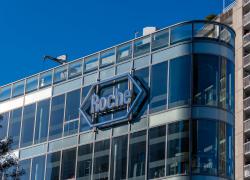
ASCO 2025 – an early split between PD-L1 conjugates

Much interest surrounds Pfizer's work on anti-PD-L1 antibody-drug conjugates, of which there are now two in the clinic, but early ASCO data suggest that the company now has to contend with at least one competitor. This is Shanghai Henlius's HLX43, which featured in an ASCO poster on Monday citing response rates across several cancer types, intriguingly seen irrespective of tumours' PD-L1 expression level. That's a contrast versus Pfizer's PF-08046054, which at ASCO on Saturday showed a 33% ORR among 24 lung cancer patients expressing PD-L1 at 1% or above, but no responses among the six with PD-L1 <1%. For Henlius this may or may not be good news; activity in patients who don't express meaningful levels of a target protein might support an ADC's bystander effect, or it could signify early and untargeted disassociation of its payload. PF-08046054, originated by Seagen, uses an MMAE payload; HLX43 has a high-potency, short half-life topoisomerase 1 inhibitor, and uses Medilink's Tmalin linker technology. Apart from PF-08046054, due to enter phase 3 this year, Pfizer's TLR7 agonist-employing PF-08046037, and Henlius's HLX43, OncologyPipeline lists no other anti-PD-L1 ADCs in clinical trials.
Anti-PD-L1 ADCs in NSCLC
| Project | Company | Study | ORR in PD-L1≥1% | ORR in PD-L1<1% |
|---|---|---|---|---|
| PF-08046054 | Pfizer | Ph1 at pivotal dose (1.5mg/kg) | 33% (8/24) | 0% (0/6) |
| HLX43 | Shanghai Henlius | Ph1b dose expansion (2.0mg/kg)* | 38% (6/16) | 40% (2/5) |
Note: *ph1 included various doses and cancer types, with ORR of 37% (7/19), incl 1 PR in PD-L1<1% cervical carcinoma. Source: ASCO.
3399













